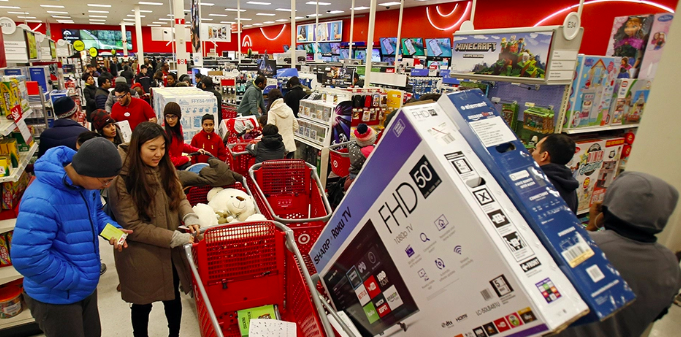The History of Black Friday
November 13, 2019
Black Friday is no longer just for gift-shoppers (though it is every gift-shoppers dream day). While Black Friday has been notorious for its holiday gift deals (for those weird people who get Christmas shopping done more than 2 days before), more and more companies are offering promotional sales. Whether it be hotels and car dealerships or cruises and airfare, Black Friday sales are becoming more and more prevalent in the U.S., and the deals are spreading even out of the country.
Black Friday is known for its deals and cut-backs on most if not all products throughout the United States. It’s a day that many people have come to look at as a holiday and rightly so. In fact, many companies and even government offices give time off for Black Friday despite it being completely unofficial. But where did all this hype about Black Friday originate? What makes people camp out for days in front of department stores in order to get products before they sell out? Let’s look at the history behind Black Friday.
Black Friday was not always used to describe the Friday after Thanksgiving. In fact, it was first used in the financial crisis when two Wall Street financiers, Jim Fisk and Jay Gould, bought a significant amount of US gold, hoping that the overall price soared and, in turn, they would be able to sell it for huge profits. On Friday, September 24, 1869, in what became referred to as “Black Friday,” the US gold market crashed, and Fisk and Gould’s actions left Wall Street barons bankrupt.
So how did Black Friday get moved to after Thanksgiving? The term was actually coined by police officers in Philadelphia in the 1950s after large crowds of tourists came to the city the day after Thanksgiving for the Army-Navy football game. This massive amount of people caused chaos in the city, inciting not only traffic jams but also shoplifting opportunities. Not one police officer in the city was allowed to take off that day and had to work long shifts, so they referred to it as “Black Friday.”
In 1966, Black Friday saw its first print in The American Philatelist magazine in an advertisement. By the late 1980s, the term was used across the nation. After this, retailers began linking it to their post-Thanksgiving sales.
As it turns out, there was actually a Black Friday mentality before the term was even invented, however. Sales in November were extremely popular beforehand, with Macy being the first to advertise post-Thanksgiving shopping in 1924 during their famous Thanksgiving Day parade. But after the police officers linked Black Friday to the chaos in Philadelphia, the shopping craze became more widespread in the 1970s and 1980s, with shops advertising to and attracting huge crowds.
Today, Black Friday is the United States’ biggest shopping event of the year, and if the trend continues, it will only be spreading more and more throughout the United States and even to the rest of the world.

